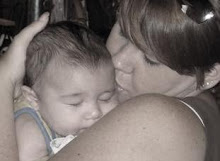From the National Institute of Neurological Disorders & Stroke (NINDS) http://www.ninds.nih.gov/
What is Tethered Spinal Cord Syndrome?
Tethered spinal cord syndrome is a neurological disorder caused by tissue attachments that limit the movement of the spinal cord within the spinal column. These attachments cause an abnormal stretching of the spinal cord. The course of the disorder is progressive. In children, symptoms may include lesions, hairy patches, dimples, or fatty tumors on the lower back; foot and spinal deformities; weakness in the legs; low back pain; scoliosis; and incontinence. Tethered spinal cord syndrome may go undiagnosed until adulthood, when sensory and motor problems and loss of bowel and bladder control emerge. This delayed presentation of symptoms is related to the degree of strain placed on the spinal cord over time. Tethered spinal cord syndrome appears to be the result of improper growth of the neural tube during fetal development, and is closely linked to spina bifida. Tethering may also develop after spinal cord injury and scar tissue can block the flow of fluids around the spinal cord. Fluid pressure may cause cysts to form in the spinal cord, a condition called syringomyelia. This can lead to additional loss of movement, feeling or the onset of pain or autonomic symptoms.
Is there any treatment?
In children, early surgery is recommended to prevent further neurological deterioration. If surgery is not advisable, spinal cord nerve roots may be cut to relieve pain. In adults, surgery to free (detether) the spinal cord can reduce the size and further development of cysts in the cord and may restore some function or alleviate other symptoms. Other treatment is symptomatic and supportive.
What is the prognosis?
With treatment, individuals with tethered spinal cord syndrome have a normal life expectancy. However, some neurological and motor impairments may not be fully correctable.
Sunday, February 3, 2008
Subscribe to:
Post Comments (Atom)






No comments:
Post a Comment